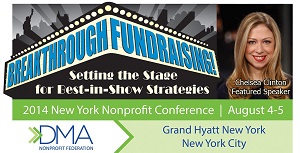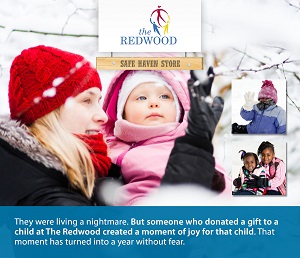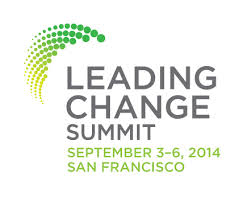
It's Not Too Early to be a Year-End Fundraising Superhero: Part One
 Year-end fundraising planning begins now. End-of-year fundraising can make or break your fundraising budget – it is the most critical time of the year.
Year-end fundraising planning begins now. End-of-year fundraising can make or break your fundraising budget – it is the most critical time of the year.
A Charity Navigator survey revealed that as much as 41% of an organization’s total annual revenue can be realized in the month of December, and as much as 33% of December fundraising can come from donors on the last day of the year.
What drives this desire of our donors to be so charitable? ’Tis the season of giving, a heightened sense of altruism and faith, or tax benefits? Yes, yes and YES! But, tax benefits are the number one motivator for year-end giving according to many sources and surveys. This makes December a superpower month, and the last day of the year a mega-power day!
Following are 6 Winning Strategies for an integrated approach to your year-end fundraising.
#1: Early Thanksgiving messaging or imagery can improve last quarter results.
Savvy organizations have successfully used cognitive strategies to lift year-end giving. For example, using Thanksgiving themes as early as August can yield big response and revenue returns in the last quarter of the year, when compared to non-”Thanks” theme appeals. Test this strategy to see if it’s a winner for you.
But don’t be a Super-Grinch by messing with Christmas. Christmas themes introduced much earlier than mid-November can negatively impact results.
#2: Append and retain.
Many organizations receive as much as 30% of their total online giving in the last three months of the year. Appending your offline donor file now with email addresses can boost retention and donor value. Having both a mail and an email address will afford you extra touch points in addition to appeals for donations. The mix adds depth to your donor relationships and enhances your online credibility/trust to give online.
Establishing online trust with your offline donors is essential for year-end giving success. Many donors give online because it’s usually a last minute gift and online provides a convenient and instant way to give prior to the new year.
#3: Be multi-channel, even when you think your donors are not.
Digital marketing communications prior to year-end can covertly increase donations at the end of year. Digital campaigns specifically aimed to inform and engage, can mix up your messaging across channels. Digital is a great channel to thank donors, demonstrate respect and to share stories. Personal communications will set your organization apart from competition. A healthy mix of offline appeals and online education and engagement communications will provide added depth to your donor relationships, helping your organization to be top of mind at year-end.
#4: Be social, but know what you know.
Social media and ads have a place in supporting your year-end fundraising strategies, but do not force it to be a fundraising appeal. Less than 1% of nonprofit organizations have raised a significant amount of revenue using social media and only 35% that have raised funds, have raised less than $1,000, according to a 2012 study by Blackbaud, NTEN and Common Knowledge. This trend may be changing, but don’t let the excitement of social media falsely guide you where your investment and priorities ought to be.
Your social media should support the offline and online fundraising strategies by driving traffic to your site and spreading awareness. Social links should direct traffic to rich content areas on your site. Choosing where to send donors on your site can be informed by understanding your site’s analytics and where visitors tend to convert at the highest rates.
Come back next week for the remaining two critical strategies you need to know now.
Share, Like and Post | | Article Link | CommentMaking it Personal: Notes from the DMA Nonprofit Federation NY Nonprofit Conference
 “We couldn’t do this work without people like you.”
“We couldn’t do this work without people like you.”
Chelsea Clinton’s opening keynote speech at the DMA Nonprofit Federation NY Nonprofit Conference last week addressed the nonprofit staff and partners making this industry thrive. The theme of this year’s conference was “make it personal”. Ms. Clinton’s talk, and much of what we do as fundraisers, is all about personalization – how do we use the best mix of technology, creativity, strategies and marketing channels to positively impact this world?
Data on Our Minds
“We need to be relevant to what people care about and connect something ephemeral to something personal,” said Clinton. Data-driven marketing is a buzz phrase throughout the nonprofit industry, and was also an area of focus at the two-day event. Not only are the collection and capture of data important, but also methodical analysis, and the ability to act on the story the data tells.
As the fundraising landscape has evolved to incorporate four generations of givers, we must shift our approaches to be relevant and personal to all eras of donors. What is more personal than understanding exactly how each supporter of your organization wants to hear from and interact with you? Today, the donor experience is valued more than ever, and it’s imperative to provide consistent messaging across mediums. The industry has experienced a game-changing shift to one-to-one marketing, necessitating the leveraging of endless points of data including transactions, engagements, actions and social conversations.
The number of nonprofits testing modeling and leveraging co-operatives has also been on the rise for direct fundraising campaigns. Since the market offerings have increased competition, pricing for modeling and other data overlays has decreased significantly in recent years. Leveraging this type of data has proven fruitful for many nonprofits, and many more are testing the waters.
Are the Systems in Place?
Not only do we want to understand who are most likely to give to a cause, but we also must have the systems in place to capitalize on this information and take action. It can be easy to get distracted or overwhelmed by the technological opportunities or the plethora of data available. How does your organization prioritize and test the most effective and actionable initiatives?
For example, a nonprofit could identify high dollar donor prospects through modeling and wealth indexing, but does the internal staff or resources exist to reach out to and cultivate these potential major donors?
Or, some groups have had success finding “social influencers” using social media listening tools, but are they prepared to personalize and tailor subsequent messaging and campaigns to those individuals? And, what is the potential payoff for those efforts when balancing the cost and staff resources?
Collaboration is Crucial
As our world becomes more connected, our organizations must strive to work together more effectively. Especially with digital technology and data infrastructure, it’s more important than ever to coordinate efforts and assess program success from a 360 degree view.
For some nonprofits, that may mean the development team coordinates with the communications team for a social media campaign. For others, it may mean consolidating your databases to understand any and all touch points your supporters, members, volunteers or donors receive to properly attribute revenue and marketing dollars.
As Chelsea Clinton stated as she closed out her address, “Not only can we come up with new and creative ways to solve a problem, but we can do so through teamwork and conversation.”
Share, Like and Post | | Article Link | CommentNonprofit Hits a Holiday High With New Online Gift Catalogue
 A Toronto-based emergency shelter for women and children fleeing violence, with its agency partner hjc, successfully transformed its traditional year-end giving campaign into an innovative online giving experience – and won a 2014 IMAB Integrated Marketing Award as a result!
A Toronto-based emergency shelter for women and children fleeing violence, with its agency partner hjc, successfully transformed its traditional year-end giving campaign into an innovative online giving experience – and won a 2014 IMAB Integrated Marketing Award as a result!
The Redwood provides a safe haven for women and children who have fled abusive situations. Through community support, the shelter has cultivated many loyal and passionate donors since opening its doors in 1993. With the holiday fundraising season approaching in 2013, the shelter made the decision to shift its traditional holiday gift program to online – and they hit a holiday high in doing so.
Difficult Decisions
The decision to focus on a different channel did not come easily. The Redwood’s long-standing holiday giving program accepted physical gifts from donors. While the growing number of gifts allowed The Redwood to provide holiday hope to more and more participants each year, the staff time required to sort and wrap all the gifts also increased. Furthermore, the vast quantity of gifts had to be stored somewhere. The shelter had no choice but to pile up the gifts in the limited “free” space they had – this included the children’s library, the computer room, the piano and tutoring spaces, and the women’s exercise room. So, unfortunately, these rooms, which serve important purposes to women and children, were used as storage and closed off during the busiest time of the year.
Anxious to find a solution to the program’s related difficulties, after much deliberation, The Redwood decided to replace the traditional holiday gift program with an online holiday gift catalog: the Safe Haven Store. With the help of fundraising agency hjc, The Redwood launched an e-commerce portion of their website, with a fresh, unique design to imitate the holiday shopping experience in their new virtual store.
With gift amounts ranging from $25 to $100+, donors first select a donation amount and then select one item from the list of gifts associated with the chosen price point. For example, a $25 donation would cover a new bedtime story for children or a basket of toiletries for women. A $75 donation could buy new clothes for a woman in need or fund a pizza party for all the participants at the shelter.
The Store + More
The virtual holiday catalog was a big first step, but the organization knew they must integrate a variety of digital elements to ensure its success. The Redwood promoted the Safe Haven Store across channels, carrying the same creative over in a multifaceted online campaign, through coordinated email design, website banners on the shelter’s home page, online advertising through Google, as well as posts on social media. The email series was comprised of four appeals, all with one main call to action: asking supporters to purchase a gift from the Safe Haven Store.
In direct mail, The Redwood developed a reply card insert for their year-end package, which showed images of five gift options donors could choose from. This allowed the offline audience to purchase a few of the same gifts through the mail that were otherwise only found in the online store.
Donors Embrace New Way of Giving
The Redwood believed its donors would welcome this new way of giving, and they were right.
The new online holiday campaign generated a 64% increase over the previous year in combined online and offline revenue. Not only did the organization profit financially overall, but this online store allowed the shelter to better allocate the funds by purchasing essential items quickly and efficiently for families in need. As a result of the initial success, the Safe Haven Store is now available year-round.
This award-winning campaign not only allowed The Redwood to optimize its fundraising, but most importantly, the staff was able to spend more time providing a true safe haven for women and children. Staff members were no longer forced to spend hours organizing and wrapping gifts during the holiday season, and they could focus their attention to the women and children looking for support, helping them to heal and enjoy lives free of domestic violence.
Share, Like and Post | | Article Link | CommentTools for Integrating Your Marketing and Fundraising Efforts
This article was written by guest authors Kyle Andrei, Research Analyst, and Ethan Drigotas, Research and Fundraising Intern -- both from Idealware.
 Marketing is about getting people to know and think positively about your organization. Fundraising is about getting people to donate. You probably spend a lot of time trying to move people from the first group up the ladder of engagement to the latter group. Integrating these two functions can make them both easier and more effective.
Marketing is about getting people to know and think positively about your organization. Fundraising is about getting people to donate. You probably spend a lot of time trying to move people from the first group up the ladder of engagement to the latter group. Integrating these two functions can make them both easier and more effective.
You don’t need technology to integrate your nonprofit’s marketing and fundraising, but it can help. At Idealware, we work with a lot of different types of technology you can use to ease your efforts in this area, and in this post we’ll go over them one at a time.
Website
The first—and maybe the most obvious—is your website. Often the primary means that people learn about your organization online, it should also be the first tool you evaluate. Can site visitors easily learn about your organization’s mission and services? Can they sign up to receive email, or to donate? If content is out-of-date—like pictures and bios of former staff members, references to old programs, or calendar events that have already happened—you’ll need to fix it.
A good Content Management System for nonprofits will let you create and maintain customized websites, update graphic design and navigation, and automate routine updates—for instance, removing events from your homepage after they’ve come and gone—all without technical skills. It will also help you adapt your site for mobile visitors to make it easy for everyone to reach you and learn more.
Finally, a website analytics tool like Google Analytics can help you monitor your visitors at no charge. What pages do they visit most often, how did they find those pages, and where did they go next? Answering these questions will help you prioritize for future updates and evaluate what pages or donation forms were more or less successful than others.
Broadcast Email
If you email more than a few dozen people at a time, you should be using a broadcast email tool. Tools like Outlook or Gmail aren’t designed to support large-scale mailings and won’t help with the formatting and list-management tasks critical for large lists. What’s more, using them to email hundreds of people means you may reach more spam filters than inboxes—or worse, you might get your mail server blacklisted as spam, blocking future emails from anyone in your organization.
Broadcast email software will let you email a group of people at once, and can help you create attractive emails and manage email address lists—including letting constituents subscribe and unsubscribe themselves. More advanced tools help you collect email addresses on your website, mail-merge information from your database into emails, work with segments of your list, and see detailed statistics.
Social Media
If your organization isn’t already on social media, these channels might help you tap into a new audience, reinforce your relationship with existing supporters, and expand your online presence. These days, so many people are on Facebook that most organizations are expected to have a presence on the site, but before picking the other channel or channels to which you’ll devote resources, think about who your target constituents are. LinkedIn is likely to be of particular interest to groups whose mission is to support people in their jobs or that focus on careers. Twitter and Google Plus tend to have a more tech-savvy audience. Tumblr is more popular with teens and young people.
Each social media channel has its own uses and expectations, as well. Some, like Twitter, are geared toward short bits of information or links to resources, and some are more visual, like Tumblr, a highly social blogging platform. It’s worth at least exploring two or more to find out what style and audience works best for your organization.
Donor- and Constituent Relationship Management Systems
As we mentioned at the beginning of this post, marketing is about getting people to know and think positively about your organization, and fundraising is about getting people to donate. Constituent management is about keeping track of all those people. Since the idea is to move people in the first group to the second, you have a couple of options for tracking everyone. Do you track current and potential donors in one database and the people on your email list in another? Or should you keep everyone in the same database? Picking one method over the other isn’t a cut-and-dried decision for every organization. The answer depends more on who your highest priority constituents are.
A Donor Management System lets you track donors, gifts, and prospects. You can access a donor’s contact information and giving history, and many provide options to mail-merge letters, and email lists of of donors. Sophisticated systems might track events and/or provide online giving functionality to replace other systems your organizations might use.
Constituent Relationship Management (CRM) systems, on the other hand, are designed to track comprehensive data about each constituent—not just their donations and membership dues, but event attendance, volunteer work, and other information you might care to track about a particular individual. These systems are typically flexible from a technical standpoint, so you (or a consultant) can tailor them to the processes you need to support. CRM platforms are also meant to be tightly integrated with your website and e-marketing systems. Some people use “CRM” as a catchall term for any constituent database, but at Idealware, we use it to describe this specific kind of flexible system that has substantial integration with your organization’s online presence.
Integrated Online Systems
If multiple systems or costly configuration doesn’t seem appropriate for your organization, but you are looking to implement an integrated approach to marketing and fundraising, an integrated online system may be right for you. This type of system lets nonprofits manage their web presence and other organizational information in a single online package. Many systems can provide the ability to manage member, donor, and other constituent data, accept online payments, send broadcast emails, manage event registrations, update websites, and more. While these systems have great functionality, they can also require more of an investment to buy and set up than some of the other options listed here.
While your website, email, and database working together will cover most of your needs, there will always be something that doesn’t quite fit, or a function that one of the three doesn’t handle well. In those cases, it might make sense to look into a more-targeted solution, like Event Registration Software, Online Donation Tools, and Dashboards.
Integration may seem overwhelming at first, but the benefits of having a cohesive marketing and fundraising plan can go a long way. While there are lots of different organizations and integration needs, there are also lots of ways to fuse your marketing and fundraising approach, and plenty of technology out there to help get you started.
Looking for a little more information or help? Check out Idealware’s Practical Guide to Integrated Communications: A Workbook for Nonprofits.
Share, Like and Post | | Article Link | CommentNonprofits Leading Change Through Integrated Fundraising and Marketing
This article was written by guest author Michael Stein, Senior Account Executive at Mal Warwick | Donordigital. He brings over 25 years of experience in nonprofit technology strategy. With Nick Allen and Mal Warwick, Michael co-wrote the groundbreaking 1997 book: Fundraising on the Internet: Recruiting and Renewing Donors Online.
 In my day-to-day work, I’m constantly pushed by nonprofit clients to meet and exceed fundraising goals, bring new innovations to the table that will engage constituents, and be endlessly creative with messaging, design, and user experience. My clients are also asking me to grasp profound changes that impact how nonprofits communicate, engage, and raise money: Changing media landscapes, the increased use of mobile devices, the decline of print news, the disappearance of landline phones, and the growth of social media are all creating challenges for nonprofit communicators and fundraisers.
In my day-to-day work, I’m constantly pushed by nonprofit clients to meet and exceed fundraising goals, bring new innovations to the table that will engage constituents, and be endlessly creative with messaging, design, and user experience. My clients are also asking me to grasp profound changes that impact how nonprofits communicate, engage, and raise money: Changing media landscapes, the increased use of mobile devices, the decline of print news, the disappearance of landline phones, and the growth of social media are all creating challenges for nonprofit communicators and fundraisers.
I believe that responding to these challenges means embracing the reality of a busy, distracted, and multi-channel world through integrated fundraising and marketing.
That’s why I was intrigued when I heard about NTEN’s upcoming Leading Change Summit in San Francisco on September 3-6, 2014. After years of convening their Nonprofit Technology Conference for a wide nonprofit audience, NTEN created the Leading Change Summit to offer an opportunity for nonprofit change-makers to access advanced level learning among peers in the nonprofit industry. This event will bring together nonprofit change-makers that hold positions including executive leadership, and directors/managers of marketing and communications, fundraising, and IT.
Upon hearing about this event, I was drawn to help lead the development of the Digital Strategy Track, which is designed for savvy online marketers, communicators, and fundraisers. It invites us all to “Break out from the norm and drive innovation by putting the Web to work.” My hope for the Digital Strategy Track is that we’ll debate many of the issues around fundraising and marketing in a multi-channel world, and ask ourselves: What does nonprofit technology innovation look like and how do we put it to work for real results?
For communications, this means accepting that real people use a multitude of devices and moments to browse news and then make choices about what to follow up on or read more about. Attention span is by its very nature interrupted by the real world of family, commuting, and work. So, our communications strategies and tools need to be multi-channel, repetitive, and interruptible.
For fundraising, this means accepting that direct mail, telemarketing, email, peer-to-peer campaigns, and events work together to inspire and motivate fans to become donors. Real people will browse campaign messages through multiple channels at multiple times and will make giving decisions in their own time and pace.
Ultimately, the reality of a multi-channel world requires us as marketers and fundraisers to put real people at the heart of our engagement strategies. Our strategies, tools, schedules, and messages become more effective when we frame stories and communications that resonate with everyday people.
Multi-channel means ensuring that our online and offline programs include diverse audiences and communities. Multi-channel means accepting that our constituents and donors are often busy parents who have a lot of other things going on. Multi-channel means listening to how our supporters want to be engaged with, and then designing campaigns around their needs rather than ours.
I’m excited to dive deeper into this conversation with my peers at the Digital Strategy Track at the Leading Change Summit. We’ll explore how to match organizational goals with digital strategies to win campaigns, celebrate supporters, drive engagement and donations, and more.
There’s still time to join in this conversation – register today for the Leading Change Summit! And, here’s a special offer for IMAB blog readers: Register today at the NTEN Member rate ($200 off) with the discount code: LCSPartner200.
Share, Like and Post | | Article Link | Comment

















